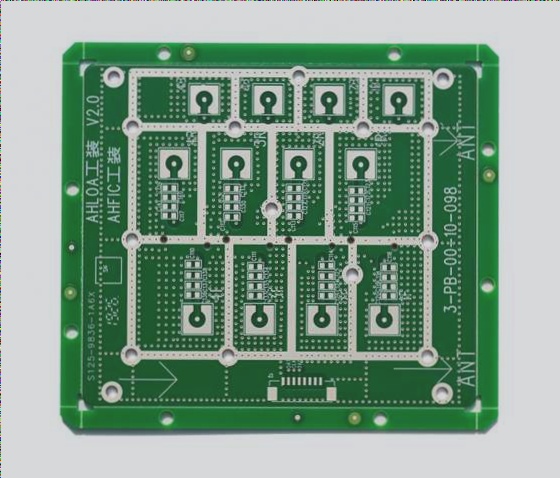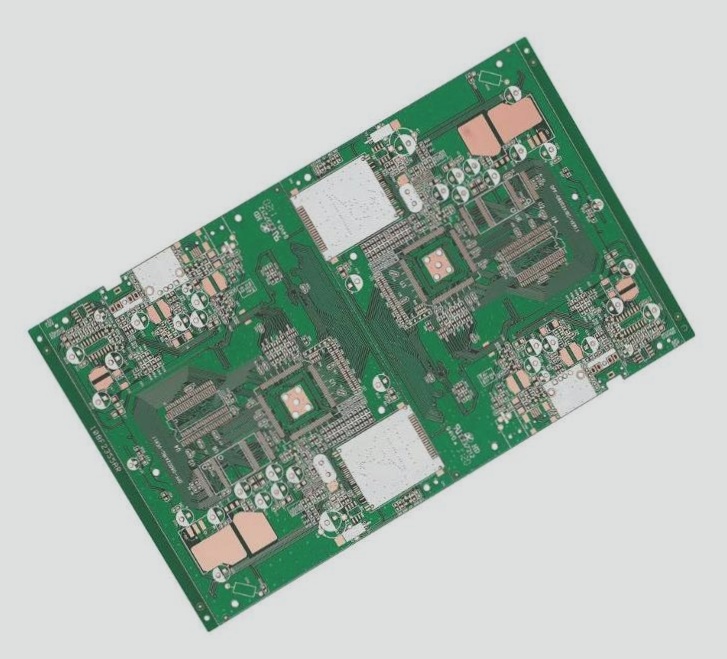1. The basic concept of backflow
2. In the schematic diagram of a digital PCB board, the propagation of digital signals is from one logic gate to another logic gate. The signal is sent from the output end to the receiving end through wires, appearing to flow in one direction. Many digital engineers therefore think that the loop path is irrelevant. After all, both the driver and the receiver are specified as voltage-mode devices, so why bother with currents?
3. However, basic circuit theory tells us that signals are propagated by currents, specifically the movement of electrons. One characteristic of electrons is that they never stay anywhere, no matter where the current flows, it must come back. Therefore, the current always flows in a loop, and any signal in the circuit exists in the form of a closed loop.
4. For high-frequency signal transmission, it is actually a process of charging the dielectric capacitor sandwiched between the transmission line and the DC layer.

2. The impact of return path
Digital circuits often depend on ground and power planes to facilitate the return path. The return paths for high-frequency and low-frequency signals are different. Low-frequency signals follow an impedance path for the return, while high-frequency signals follow an inductive path. When current starts from the signal driver, travels through the signal line, and is injected into the receiving end, there is always a return current in the opposite direction, forming a closed loop on the copper-clad plane. The noise frequency caused by the current flowing through the plane is equivalent to the signal frequency, and the logic gate responds to the difference between the input signal and the reference pin. It’s important to pay attention to disturbances in the ground reference plane, as well as those in the signal path. Differential signals can effectively mitigate ground bounce noise and power plane slippage.
When multiple signals on the PCB are switched synchronously, the resulting transient load current creates synchronous switching noise (SSN) and ground plane bounce noise. To address this, we analyze the switching state of the digital chip and take measures to control the return flow method in order to reduce radiation.
3. Theoretical understanding of return path
In a printed circuit board, current always flows in a loop, with the return paths typically flowing through ground and power planes. The return current’s path depends on the frequency of the current, with DC or low-frequency current following the impedance path and high-frequency current following the inductive path.
Summary:
1. By implementing a principle of localized layout and wiring, we can reduce interference from the return current of digital signals to analog circuits.
2. The high-frequency transient return current can be controlled through adjacent ground or power planes, and termination loads for the signal traces.
3. Controlling the return path allows us to manage the radiation level of the surrounding area.
4. Resolving reflow issues
Reflow problems on a PCB often stem from chip interconnection, copper surface cutting, and via jumping. When a digital circuit operates, transitions between high and low voltages generate transient load currents, causing return currents to flow from the power supply into the circuit or from the circuit into the ground. By analyzing these factors, we can develop solutions to address the reflow problem.
4.1 Reflow problems caused by chip interconnection
During the transition of the drive terminal from low level to high level, the distribution of capacitance and inductance generated by the chip, power supply, and ground plane contribute to the generation of loop currents. These loop currents can pose difficulties in predicting and controlling return paths, leading to crosstalk on the PCB board.
2. In the schematic diagram of a digital PCB board, the propagation of digital signals is from one logic gate to another logic gate. The signal is sent from the output end to the receiving end through wires, appearing to flow in one direction. Many digital engineers therefore think that the loop path is irrelevant. After all, both the driver and the receiver are specified as voltage-mode devices, so why bother with currents?
3. However, basic circuit theory tells us that signals are propagated by currents, specifically the movement of electrons. One characteristic of electrons is that they never stay anywhere, no matter where the current flows, it must come back. Therefore, the current always flows in a loop, and any signal in the circuit exists in the form of a closed loop.
4. For high-frequency signal transmission, it is actually a process of charging the dielectric capacitor sandwiched between the transmission line and the DC layer.

2. The impact of return path
Digital circuits often depend on ground and power planes to facilitate the return path. The return paths for high-frequency and low-frequency signals are different. Low-frequency signals follow an impedance path for the return, while high-frequency signals follow an inductive path. When current starts from the signal driver, travels through the signal line, and is injected into the receiving end, there is always a return current in the opposite direction, forming a closed loop on the copper-clad plane. The noise frequency caused by the current flowing through the plane is equivalent to the signal frequency, and the logic gate responds to the difference between the input signal and the reference pin. It’s important to pay attention to disturbances in the ground reference plane, as well as those in the signal path. Differential signals can effectively mitigate ground bounce noise and power plane slippage.
When multiple signals on the PCB are switched synchronously, the resulting transient load current creates synchronous switching noise (SSN) and ground plane bounce noise. To address this, we analyze the switching state of the digital chip and take measures to control the return flow method in order to reduce radiation.
3. Theoretical understanding of return path
In a printed circuit board, current always flows in a loop, with the return paths typically flowing through ground and power planes. The return current’s path depends on the frequency of the current, with DC or low-frequency current following the impedance path and high-frequency current following the inductive path.
Summary:
1. By implementing a principle of localized layout and wiring, we can reduce interference from the return current of digital signals to analog circuits.
2. The high-frequency transient return current can be controlled through adjacent ground or power planes, and termination loads for the signal traces.
3. Controlling the return path allows us to manage the radiation level of the surrounding area.
4. Resolving reflow issues
Reflow problems on a PCB often stem from chip interconnection, copper surface cutting, and via jumping. When a digital circuit operates, transitions between high and low voltages generate transient load currents, causing return currents to flow from the power supply into the circuit or from the circuit into the ground. By analyzing these factors, we can develop solutions to address the reflow problem.
4.1 Reflow problems caused by chip interconnection
During the transition of the drive terminal from low level to high level, the distribution of capacitance and inductance generated by the chip, power supply, and ground plane contribute to the generation of loop currents. These loop currents can pose difficulties in predicting and controlling return paths, leading to crosstalk on the PCB board.


